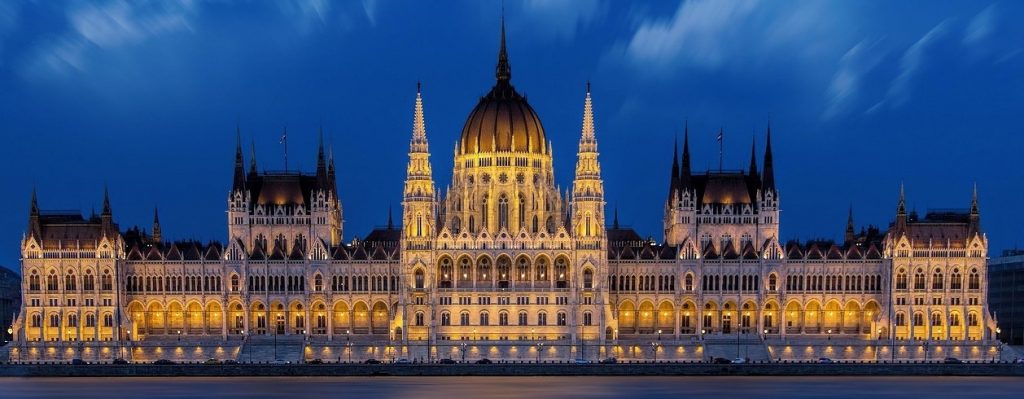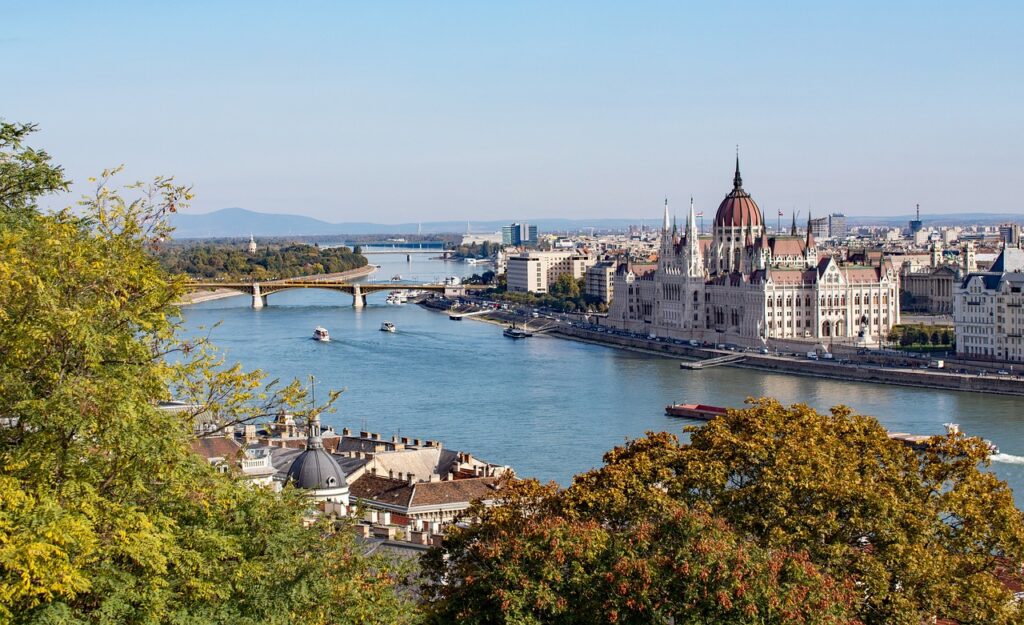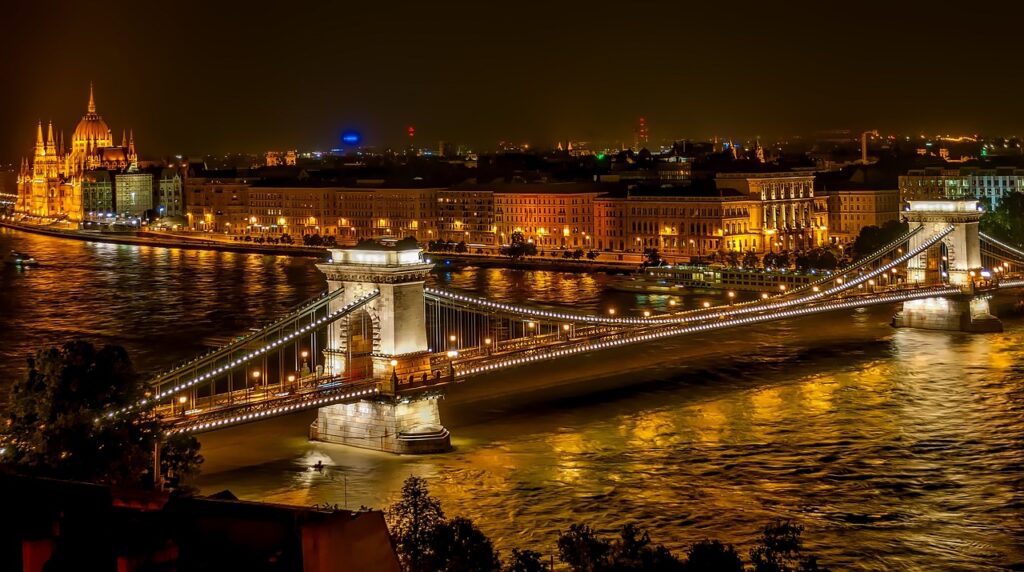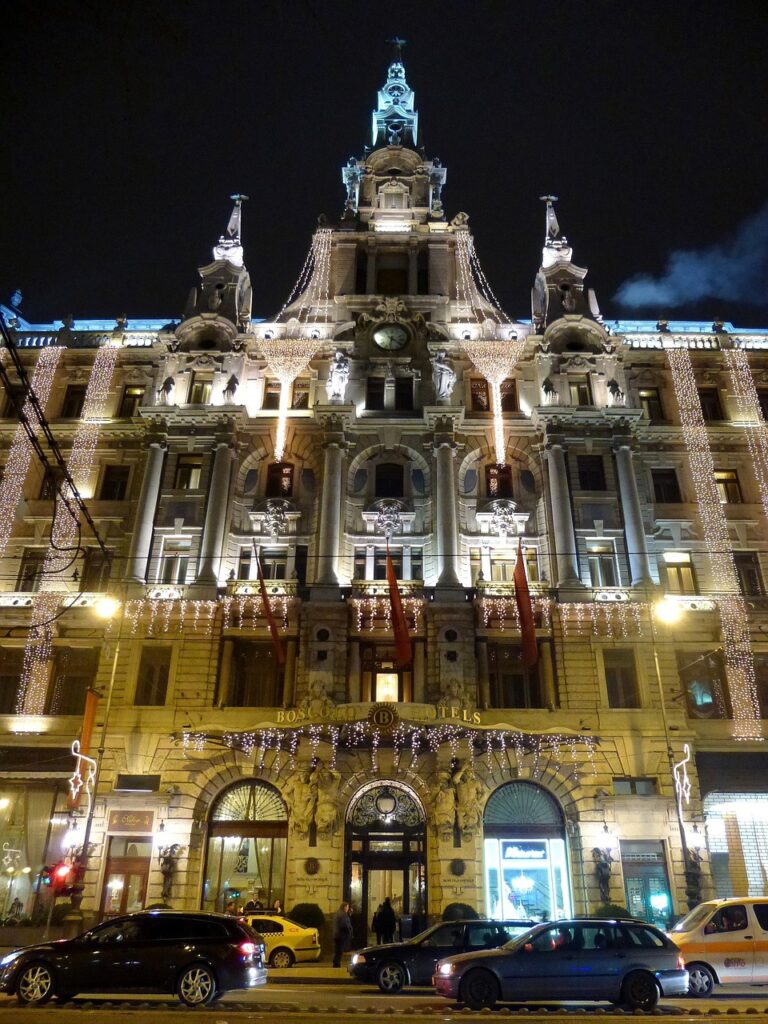Budapest was named on 17 November 1873 to unite the hilly Buda and the flatter Pest. 3.7m tourist visit Budapest every year to see bohemian beauty. Hungary is the birthplace of biro and Rubik’s cube and vitamin C was discovered there too. So, how about the feng shui of Budapest?
Landmarks, buildings and sweeping views
Parliament, the biggest building in Hungary, was built in 1896 (when Hungary was three times as big as it is now) and had 691 rooms.
Andras Hadik (18th-century war hero) statue is a popular destination for students who are eager to pass exams and are willing to touch the horse’s balls as a lucky charm ritual.
Buda Castle Funicular was established in 1870; travelling up Castle Hill at 1.5 meters/second will get you to the Buda castle district, Buda’s Old Town (World Heritage site) which has great views of the city. The place is full of castles and historic squares; the Budapest History Museum traces city life from Roman times onwards; Trinity Square is home to 13th-century Matthias Church and the turrets of the Fishermen’s Bastion with sweeping vantage points.
Another way to see the aerial views of Budapest is to get the Zugliget chairlift which was opened in 1970.
St Stephen’s Basilica is a must-see.
Pest’s Jewish Quarters has numerous trendy ‘ruing bars’ in abandoned buildings and partly hidden courtyards worth discovering.
Harmony: Feng Shui and the Five Elements of Budapest, Hungary
Budapest, the vibrant capital of Hungary, provides an intriguing canvas where history and modernity, tradition and innovation, intersect in a dynamic dance. From this rich cityscape emerges a fascinating exploration of Feng Shui’s five elements – water, wood, fire, earth, and metal. Let’s delve into how these elements shape and reflect the spirit of Budapest.
Water: The Lifeblood of Prosperity
Water, representing prosperity and the flow of life in Feng Shui, finds powerful expression in Budapest’s Danube River. The river, elegantly bisecting the city into Buda and Pest, is a central vein of energy and prosperity. The numerous bridges, including the emblematic Chain Bridge, facilitate connection and interaction, echoing water’s fluid and dynamic nature. The city’s famous thermal baths, like the Széchenyi Thermal Bath, further underline the water element, promoting healing and rejuvenation. Budapest, Hungary’s capital, is bisected by the River Danube. The hilly Buda district is connected with flat Pest by a 19th-century Chain Bridge.
Water seems important to Hungarian. Hungary houses 1500 thermal springs and 450 public baths.
Széchenyi Baths has a high mineral content of magnesium (good for stress), calcium, fluoride (not sure about that), sodium, sulphates and some more at 38 degrees Celsius.
Wood: Growth and Renewal amidst Urban Life
The wood element in Feng Shui symbolizes growth and vitality. This energy is tangible in Budapest’s numerous parks and green spaces, like Margaret Island and the City Park, offering retreats of serenity within the bustling city. The green hills of Buda, the trees lining the Danube, and the wooden artefacts in the Great Market Hall contribute to the wood element’s sense of growth and renewal.
Fire: The Transformative Passion of Culture
Fire, representing transformation and passion in Feng Shui, burns brightly in Budapest’s rich cultural heritage. From the city’s energetic festivals, such as the Budapest Summer Festival, to its vibrant gastronomy, fire’s transformative energy is ever-present. The vibrant pubs and the passion that echoes in the performances at the Hungarian State Opera further reinforce the fiery spirit of the city.
Earth: Historical Stability and Nourishment
Earth, the Feng Shui element signifying stability and nourishment, is deeply ingrained in Budapest’s historical roots. Landmarks like the Buda Castle and the Fisherman’s Bastion provide a sense of grounding, linking the city to its historical heritage. The hearty Hungarian cuisine, the nurturing thermal baths, and the warm hospitality of its inhabitants further embody the earth element’s nurturing qualities.
Metal: Resilience and Innovation
Finally, the metal element, embodying resilience, precision, and clarity in Feng Shui, is illustrated in Budapest’s modern infrastructure and innovative spirit. The city’s advanced metro system, resilient structures such as the Hungarian Parliament Building, and the innovative startup scene signify this metal element. The resilience of the city and its people, reflected in their ability to rebuild and thrive despite past struggles, mirrors the strength of the metal element.
In conclusion, the essence of Budapest is beautifully encapsulated by the interplay of Feng Shui’s five elements, creating a harmonious blend of history, culture, and urban dynamism. Through the lens of Feng Shui, we can perceive the city as a lively tableau where nature’s elements combine with human creativity, constructing a vibrant symphony of energy, balance, and transformation.
Food
National Hungary’s dish is goulash and fish soup. Unicum (1790) has a secret recipe of 40 herbs and spices, originally brewed as an indigestion tonic.
Feng shui consultants in Budapest
A quick Google search revealed that there are not many feng shui consultants in Budapest. So if you live in Budapest or anywhere in Hungary and are looking for a feng shui consultant, feel free to call/text/Whatsapp me on +44 7956 288574 for a quote for feng shui consultation for your home or workplace. I’d be happy to travel to Bucharest or do a remote feng shui consultation via Skype / FaceTime or Whatsapp. Email me
I’d be happy to come to Budapest and teach feng shui class or workshop if you’re willing to organise it.




